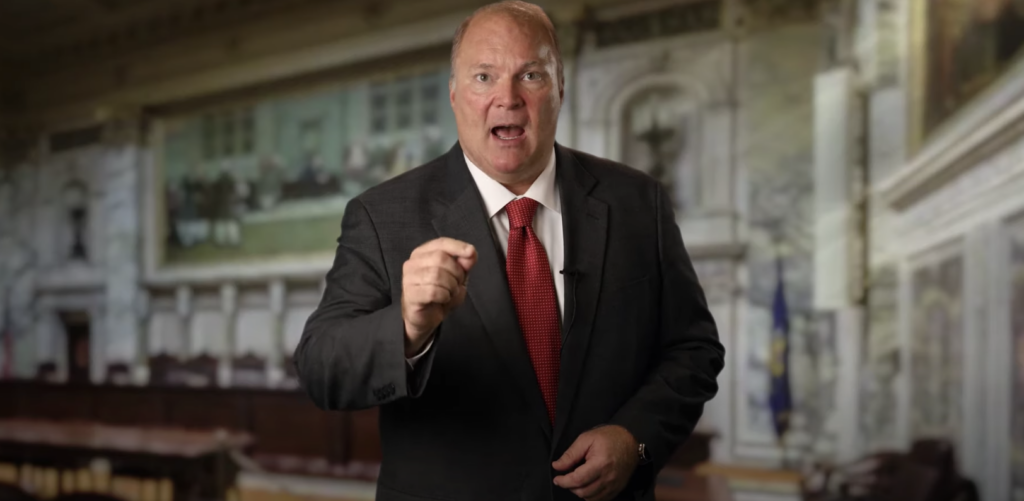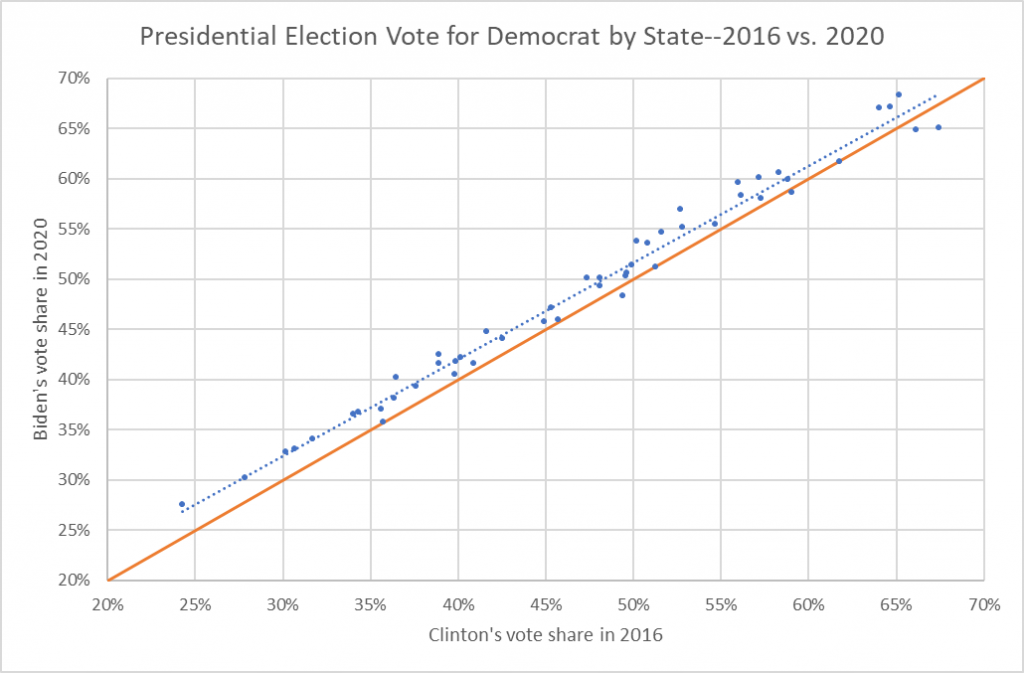Michael Gableman Versus The Facts
His report claims grants to 5 Wisconsin cities changed the 2020 election. Let’s examine the evidence.
Michael Gableman opens his second interim report by describing it “as a first step to begin restoring faith in America’s elections.” A more accurate description is that it’s an attempt to further convince Republican voters the 2020 presidential election was illegitimate.
However, confidence in the vote count strongly correlated with the voters’ partisan affiliation, with around 90% of Democrats being very confident compared 10% of Republicans. Partly this reflects Trump supporters’ disappointment that their candidate lost. But it also reflects that many of them live in an information bubble, constantly bombarded by messages attacking the election.
Gableman and his report is clearly part of that bubble.
One of Gableman’s obsessions is a series of grants won by Wisconsin’s five largest cities—Milwaukee, Madison, Green Bay, Racine, and Kenosha–to upgrade their election infrastructure. The grants came from the Center for Tech and Civic Life (CTCL), funded by a $250 million donation from Mark Zuckerberg and his wife Priscilla Chan.
The group of five Wisconsin cities called themselves the Wisconsin Five (WI-5). In his report, Gableman calls them the “Zuckerberg 5,” apparently hoping to play on hostility to Facebook.
A CTCL press release from last July set out the goals of these grants:
CTCL is providing support to Wisconsin election officials so no voter is required to make a choice between their health and their ability to vote. From ensuring that polling places are open and following the latest public health guidelines, to providing options for voters to easily and securely return absentee ballots, to making certain that the incredible people who step up to serve as poll workers are protected and well compensated for their service, we’re proud to partner with the five largest cities in Wisconsin to deliver a smooth voting process that inspires confidence.
It is worth remembering that lines stretching around the block at Milwaukee’s Riverside High School and other voting stations made national front-page news following the spring 2020 election during the start of the COVID-19 pandemic.
Gableman devotes five of the report’s eleven chapters (not counting the introduction, conclusions, and recommendations) to attacks on the grants. In chapter 1, he calls them “election bribery.” In chapter 2, he claims the “scheme would prove to be an effective way to accomplish the partisan effort to ‘turnout’ their desired voters.” In chapter 4 he asserts that:
Safe voting was a pretext—the real reason for CTCL’s WSVP grants was to facilitate increased in-person and absentee voting in specific targeted areas inside the Zuckerberg 5.
In chapter 11, he claims that the plan aimed “to pick and choose among groups of similarly situated voters to dole out special voting privileges,” thus violating the equal protection clause.
He offers no evidence for these claims. He asserts without evidence that the aim of the CTCL grants was to drive more Democratic votes, essentially claiming the ability to read minds.
The next chart compares the share of the two-candidate state vote that went for Hillary Clinton in 2016 (on the horizontal axis) to the Joe Biden vote in 2020 (on the vertical access). The rust-colored line is the diagonal. Biden got a larger share of the vote in states above; in the five states below the line, Donald Trump improved his 2016 performance in 2020.
I include this chart to illustrate the stickiness of vote shares from year to year. If CTCL’s aim was to win the election by driving up the Democratic turnout, most of its money was spent wastefully.
The next chart expands the previous chart to show the percentage vote increase in 2020 compared to 2016 for the six competitive states as well as the average increase for the remaining red and blue states. Both candidates votes increased in 2020, but Biden’s increase was bigger than Trump’s.
There is no sign that the increase was larger in competitive states. In fact, the chart shows the opposite: increases in the six swing states are smaller than the average increases in the other states, whether red or blue. I find this surprising considering that most of campaign advertising was focused on the competitive states and these voters could think of their votes as particularly significant. Perhaps the crush of political stuff, particularly negative advertising, turned some voters against everyone running.
Then there are the election results in Wisconsin. The next chart shows the percentage change in the Democratic vote share in (reading from left to right) Wisconsin, the Wisconsin Five cities listed individually and together, and Wisconsin outside the Wisconsin Five. The numbers are calculated by subtracting Clinton’s share of the two major party vote in 2016 from Biden’s share in 2020. Turnout for both candidates was larger in 2020 than in 2016. Winning Wisconsin depended on increasing one’s market share more than the opponent.
If the aim of the CTCL grants to the Milwaukee Five was not to allow more safe voting, as it claimed, but an unstated plan to increase the Democratic vote, as Gableman charges, this sneaky effort failed. The most logical conclusion is this was never the group’s aim.
After reading Gableman’s report, Philip Bump (whom I regard as the Washington Post’s Data Wonk) tweeted:
This Wisconsin “fraud” report is so mind-bogglingly stupid that I’m honestly amazed the man responsible for it sat on the state Supreme Court.
While the report’s call to decertify the 2020 election has drawn the most attention, Gableman’s unproven smear of the CTCL grants offers a trove of examples in support of Bump’s tweet. The report certainly is mind- boggling.
Data Wonk
-
Why Absentee Ballot Drop Boxes Are Now Legal
 Jul 17th, 2024 by Bruce Thompson
Jul 17th, 2024 by Bruce Thompson
-
The Imperial Legislature Is Shot Down
 Jul 10th, 2024 by Bruce Thompson
Jul 10th, 2024 by Bruce Thompson
-
Counting the Lies By Trump
 Jul 3rd, 2024 by Bruce Thompson
Jul 3rd, 2024 by Bruce Thompson
























Well Mr. Bump, the only reason Gableman sat on the Wisconsin Supreme Court is that he ran a last minute attack ad on TV that was totally false and racist. The Wisconsin Judicial Commission charged Gableman for violating judicial ethics for falsely suggesting his opponent (who is Black) freed a rapist to commit another crime. Gableman ultimately escaped punishment without ever being exonerated, thanks to free legal services provided by one of Wisconsin’s most expensive Republican law firms. He later authored a new code of ethics for the Supreme Court that declares justices don’t have to recuse themselves from cases that involve parties that donated big money to get them elected. Wisconsin’s code of ethics is weakest in the nation. As demonstrated by Rebecca Bradley who didn’t recuse herself from a case before her involving Jere Fabrick, a $20,000 donor to her 2016 campaign.
Yeah, once I saw that as I knew what Gabelman was – a disgrace.
Turns out he is simply the figurehead for transformation of the former republican party into a party of despotism, lies and hatred.
While some claimed that Milwaukee was important in Biden’s win we see here that it was the folks outside of Milwaukee that made the difference. No one seems to want to address the impact that Choice and Charter Schools have on the voting pattern in the City of Milwaukee No one has compared Obama’s voting patter to either Clinton or Biden’s That will tell the tale that those who support Choice and Charter VOTE Republican or in some case do not vote at all Each person who does not vote is a half vote for the person that they might have voter for. I think that the number of folks who did not vote for President in Georgia was greater than Biden won by Not sure what Wisconsin’s non voting for president was.
This does not fit Urban Milwaukee’s SLANT but I have grown accustomed to it